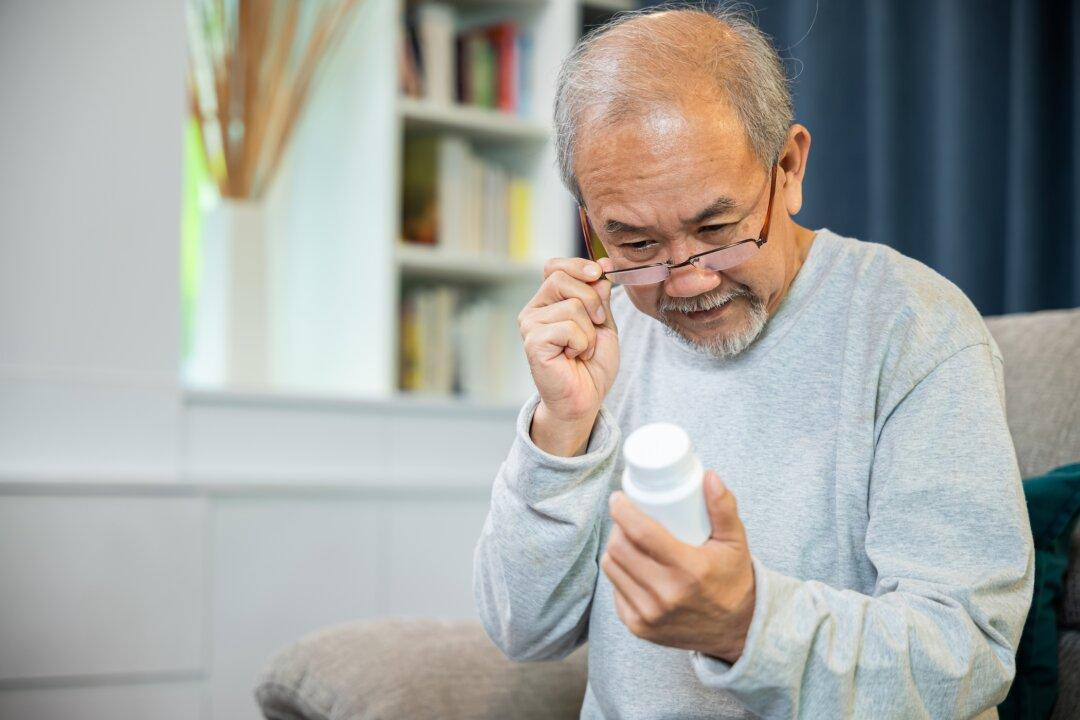Could the melanin found in our bodies and in foods like mushrooms help to mitigate the increasingly dire quantities of radiation we are exposed to daily?
In fact,
one recent and highly controversial paper proposes that melanin is responsible for generating the majority of the body’s energy, effectively challenging the ATP-focused and glucose-centric view of cellular bioenergetics that has dominated biology for the past half century.
Research is now emerging indicating that melanin may function in a manner analogous to energy harvesting pigments such as chlorophyll. While melanin’s proposed ability to convert sunlight into metabolic energy has amazing implications (one of which is the
taxonomical reclassification of our species from heterotrophic to photoheterotrophic), what may have even more spectacular implications is the prospect that melanin may actually both protect us against ionizing radiation
and transform some of it into metabolically useful energy.
Radioisotopes are increasingly accumulating in the environment, food chain, and our bodies, as a result of nuclear weapons testing,
routine releases from the nuclear industry,
fracking,
coal-fired power industries—and more recently, global fallout from the Chernobyl and
Fukushima meltdowns. Add in the unavoidable onslaught of radiation exposures from medical use,
cell phone communications and WiFi technology, and
air travel, and you can virtually guarantee your body burden of radiation exposure is significant and represents a health risk.
For these reasons reducing radiotoxicity and/or enhancing detoxification mechanisms should be a universal concern.
Melanin’s Mysterious Properties
Melanin is, indeed, one of the most interesting biomolecules yet identified.
The first known organic semiconductor, it is capable of absorbing a wide range of the electromagnetic spectrum (which is why it appears black), most notably, converting and dissipating potentially harmful ultraviolet radiation into heat. It serves a wide range of physiological roles, including free radical scavenging, toxicant chelation, DNA protection, to name but a few. It is also believed to have been one of the essential
ingredients for life on this planet. Beyond its
potential in converting sunlight into metabolic energy, it may also convert ionizing gamma radiation into useful energy. Outside the realm of comic book heroes, who would have ever thought such a thing possible?
The first time I found this possibility in the scientific literature was a 2001 Russian report on the discovery of a melanin-rich species of
fungi colonizing and apparently thriving within the walls of the still hot Chernobyl meltdown reactor site. In 2004, the
same observation was made for the surrounding soils of the Chernobyl site.
We also know that, based on a 2008 report, pyomelanin-producing bacteria have been found in
thriving colonies within uranium-contaminated soils. There is also a 1961 study that found, amazingly, melanin-rich fungi from soils of a Nevada nuclear test site survived radiation exposure doses of up to 6400 Grays (about 2,000 times a human lethal dose).
Clearly, something about melanin in these species not only enables them to survive radiation exposures that are normally lethal to most forms of life, but actually attracts them to it. Could the fungi actually be using melanin to ‘feast’ on the free lunch of anthropogenic radioactivity ?
Remarkably, back in 2007, a study published in PLoS titled, “
Ionizing Radiation Changes the Electronic Properties of Melanin and Enhances the Growth of Melanized Fungi,“ revealed that fungal cells manifested increased growth relative to non-melanized cells after exposure to ionizing radiation. In other words, the fungi grew better after being exposed to radiation. The irradiated melanin from these fungi also changed its electronic properties, which the authors noted, raised ”intriguing questions about a potential role for melanin in energy capture and utilization.”
For more on this groundbreaking study, take a look at a 2007 report in the MIT Technology Review titled,
Eating Radiation: A New Form of Energy?Can Melanin Lend Us Super Powers?
The question arises, could the consumption of melanin from fungi protect those higher on the food chain (like humans) from radiation exposure?
This question appears to have been answered affirmatively by a 2012 study published in the journal Toxicology and Applied Pharmacology, titled, “
Melanin, a promising radioprotector: mechanisms of actions in a mice model,” which found that when melanin isolated from the fungus Gliocephalotrichum simplex was administered at a dose of 50 mg/kg body weight in BALB/c mice before exposure to 6-7 Grays of gamma radiation, it increased their 30-day survival by 100 percent. The study also noted that melanin up to a dosage of 100 mg/kg (i.p.) did not cause adverse effects on the health of the mice.
In the study conclusion, the authors stated: “The observed mitigative effects of melanin in the present study gain a lot of significance especially in nuclear emergencies but need to be validated in humans by more detailed experiments. Prior to these confirmations and based on current investigations, it can be concluded that during such emergencies, diets rich in melanin may be beneficial to overcome radiation toxicity in humans.”
As succinctly summarized on the
Small Things Considered website: “The authors fed mice a mushroom used in East Asian cuisine, called Judas’ ear, tree, or jelly ear (Auricularia auricula-judae) an hour before giving them a powerful 9 Gy dose with the beta emitter Cesium137. For perspective, anything over ~0.1 Gy is considered a dangerously high dose for humans. All the control mice died in 13 days while ~90 percent of the mushroom-fed ones survived. Mice fed a white mushroom (porcini) died almost as fast as the controls, but those fed white mushrooms supplemented with melanin also survived.”
So, how does melanin perform this trick?
Unlike most other biomolecules, which experience a destructive form of oxidative damage as a result of radiation exposure, melanin remained structurally and functionally intact, appearing capable of producing a continuous electric current. This current, theoretically, could be used to produce chemical/metabolic energy in living systems. This would explain the increased growth rate, even under low nutrient conditions, in certain kinds of gamma irradiated fungi.
So, you may be wondering, what is a good source of supplemental melanin for those interested in its radioprotective and radiotrophic (“radiation eating”) properties? I believe
chaga (Inonotus obliquus) is one of the most promising candidates. Not only is it one of the nutritionally dense mushrooms, containing an immense amount of melanin, but it was known by the Siberians as the “gift from God” and the “mushroom of immortality,” by the Japanese as “the diamond of the forest,” and by the Chinese as the “king of plants.” There is also an increasingly compelling body of scientific information demonstrating its health benefits for conditions as serious as cancer.
It should be noted that there is a profound toxicological difference between the type of
radiation exposures that come from the outside in, e.g. being irradiated at a distance by radioactive material outside of us, and from the inside out, e.g. low-dose radioisotope uptake. The latter can be orders of magnitude more dangerous, as radioisotopes like uranium-238, cesium-137, and plutonium-239, can be taken into the tissues and remain there for a lifetime, wreaking havoc on a moment-to-moment basis.
Due to a phenomenon known as the
photoelectric effect, low-dose radionuclides like uranium-238, which are technically weak emitters of alpha radiation, can be tens of thousands times more damaging to our DNA than present-day radiological risk assessment models account for.
We bring this up in order to properly qualify the aforementioned information, as it could be highly misleading to those who interpret it to mean that one can simply supplement with an edible melanin product to reduce and even benefit from radiation exposure. Nothing can effectively reduce the radiotoxicity of incorporated radionuclides beyond removing them from the body.
That said, apple pectin, was successfully used post-Chernobyl to dramatically reduce the bodily burden of absorbed radionuclides in thousands of Russian children. Moreover, once we grasp the genocidal implications of the widespread contamination of the biosphere with the routine and accidental releases of radio-toxicants that maintain their toxicity for thousands, and in some cases, millions of years (e.g plutonium-239 has a half-life of 24,100 years and Uranium-238 has a half-life of 4.4 billion years), we realize the solution (if there is one) is to phase out and try to mitigate the planet-wide fallout from the nuclear industry’s activities over the course of the 75 years.






